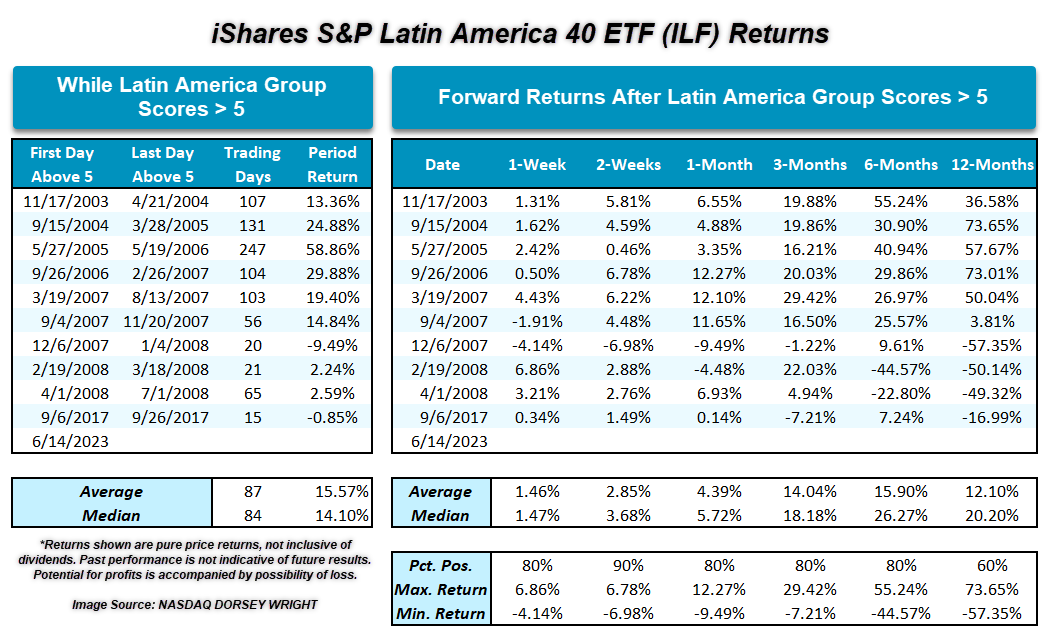
Emerging markets have charged higher, leading the Latin America region to move to 1st and a score above 5.
Emerging markets have marched higher this week, leading the iShares Emerging Market ETF EEM to return to a buy signal as discussed in yesterday’s International Equity Overview. Another topic of conversation in the International Overview was Latin America – namely Brazil – which has been the primary driver behind recent performance within the emerging markets. China has been another emerging market to have a positive performance this week, but the breadth of funds showing positive absolute and relative performance within Latin America has led to scoring improvement. Looking at the Latin America group within the Asset Class Group Scores page and the group moved above the 5-threshold following Wednesday’s action. Latin America is the only group scoring above 5 and since sits in first. This is the first time since the latter part of 2017 the group has been above this threshold, and Latin America leads Japan and Europe among those groups scoring above 4 and in the blue-sky zone.
Over the past decade, there have only been a handful of times that Latin America has attained a score of 5 or above, and many were brief lasting less than a single trading week. There has only been one period over the last decade that the Latin America group has maintained above 5 for two weeks of trading or more. Most of the periods in which Latin America scored above 5 came during the early to mid-2000s; bear in mind the score data set for the group begins in November 2003.

With the Latin America group moving above 5, we ran performance while the group remained above the 5 thresholds as well as looked at forward returns following the group moving above the score of 5. The proxy utilized for the performance of the region is the iShares S&P Latin America 40 ETF ILF due to its trading history and volume. Since November 2003, there have been ten instances in which the Latin America group scored above 5 for more than just a couple of weeks’ worth of trading (eliminating clusters within the same month). As noted above, many instances occurred from 2003 (the beginning of the score data set) through 2008 and there has only been one instance of the group scoring above 5 that lasted longer than a couple weeks within the last decade. On average, when the groups maintain above 5 for more than a brief couple of weeks, ILF has been up over 15% and the group has maintained above the 5 threshold for just shy of a full quarter.
Looking at forward returns of ILF following the Latin America group moving above the 5-threshold yield similar positive results. On average, ILF has positive returns across all the observable forward time frames, and the majority of the instances were positive with at least 80% being positive from 1-week to 6-months. Although the 12-month period had six out of ten instances positive, the last four occurrences saw ILF down more than 16% 12 months after reaching a score of five.
Whenever the Latin America group can maintain a score above five for more than just a couple of weeks, results have been positive. With the group just moving above the score of 5 on the Asset Class Group Scores page there is no way to say that the group will maintain there for two or more weeks or not. Initial exposure to the Latin American region could be taken – if it hasn’t already – and then monitored for that 2-week threshold of the Latin America group scoring above 5. This would then provide further evidence that the group’s strength isn’t just a flash in the pan, and investors could confidently increase exposure knowing returns have been positive within six months.

